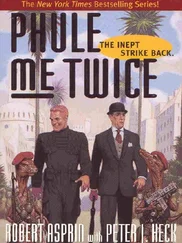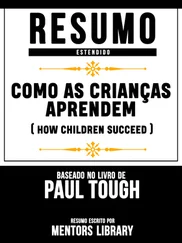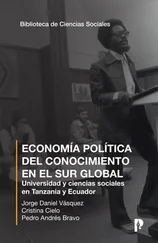After high school, Vance enrolled in a four-year public college in upstate New York to study computer information systems, but he found the subject boring, so he switched his major to casino and gaming management. He didn’t get along with the head of that department, so he dropped out, took a little time off and worked at a shoe store, and then enrolled in another school in the state system, planning to major in history. Before long, though, his tuition money ran out, and this time Vance dropped out altogether. Now in his mid-twenties, he has spent the last few years working in call centers for AT&T and Time Warner Cable, answering customer-service questions. He enjoys the work, and he is proud of what he’s accomplished, but looking back, he has regrets too. “I had a lot of potential,” he told me, “and I probably should have done more with it.”
For David Levin, it was painful to watch those first students struggle through their college experience. Every month or so, it seemed, he would get word that another student had decided to drop out. Levin took the college data personally: What could he have done differently? The whole point of KIPP was to give his students everything they needed to succeed in college. What had he failed to include?
As the dropout reports rolled in, not just from the first KIPP class but from the second and third too, Levin noticed something curious: The students who persisted in college were not necessarily the ones who had excelled academically at KIPP. Instead, they seemed to be the ones who possessed certain other gifts, skills like optimism and resilience and social agility. They were the students who were able to recover from bad grades and resolve to do better next time; who could bounce back from unhappy breakups or fights with their parents; who could persuade professors to give them extra help after class; who could resist the urge to go out to the movies and instead stay home and study. Those traits weren’t enough by themselves to earn a student a BA, Levin knew. But for young people without the benefit of a lot of family resources, without the kind of safety net that their wealthier peers enjoyed, these characteristics proved to be an indispensable part of making it to college graduation day.
The qualities that Levin was noticing in his college graduates overlapped considerably with the set of abilities that James Heckman and other economists had identified as noncognitive skills. But Levin liked to use a different term: character strengths. Since KIPP’s beginnings, in a middle-school classroom in Houston in the early 1990s, Levin and KIPP’s cofounder, Michael Feinberg, had explicitly set out to provide students with lessons in character as well as academics. They filled the walls with slogans like “Work Hard” and “Be Nice” and “There Are No Shortcuts,” and they developed a system of rewards and demerits designed to instruct their students in not only fractions and algebra but also teamwork and empathy and perseverance. At KIPP Academy, kids wore T-shirts with the slogan “One School. One Mission. Two Skills. Academics and Character.”
Levin and Feinberg originally came to Houston as part of the third Teach for America cohort; they were brand-new Ivy League graduates and relatively clueless teachers. Early on, they borrowed academic tricks and tactics from innovative educators they met, especially a woman named Harriett Ball, a veteran teacher down the hall from Levin’s classroom whose chants, songs, and drills made it easier to teach every academic subject, from multiplication tables to Shakespeare. But when it came to teaching character, Levin told me, he and Feinberg found no equivalent mentor. The absence of any established structure for teaching character, or even talking about it, meant that each year, the discussions at KIPP schools would start from scratch, with teachers and administrators debating anew which values and behaviors they were trying to nurture in their students, and why, and how.
In the winter of 2002, as the first KIPP Academy graduates were making their way through high school, Levin’s brother, a money manager, gave him Learned Optimism, a book by Martin Seligman, a professor of psychology at the University of Pennsylvania. Seligman is one of the main scholars behind the school of thought known as positive psychology, and the book, originally published in 1991, is the movement’s founding text, teaching that optimism is a learnable skill, not an inborn trait. Pessimistic adults and children can train themselves to be more hopeful, Seligman says, and if they do, they will likely become happier, healthier, and more successful. In Learned Optimism, Seligman wrote that for most people, depression was not an illness, as most psychologists believed, but simply a “severe low mood” that occurred “when we harbor pessimistic beliefs about the causes of our setbacks.” If you want to avoid depression and improve your life, Seligman counseled, you need to refashion your “explanatory style,” to create for yourself a better story about why good and bad things happen to you.
Pessimists, Seligman wrote, tend to react to negative events by explaining them as permanent, personal, and pervasive. (Seligman calls these “the three P’s.”) Failed a test? It’s not because you didn’t prepare well; it’s because you’re stupid. If you get turned down for a date, there’s no point in asking someone else; you’re simply unlovable. Optimists, by contrast, look for specific, limited, short-term explanations for bad events, and as a result, in the face of a setback, they’re more likely to pick themselves up and try again.
As he read the book, Levin recognized many of Seligman’s three-P explanatory patterns in himself, in his teachers, and in his students. Levin was famous among students and staff in those days for the long, loud lectures he regularly delivered to misbehaving or underperforming students. (“The man yelled a lot, ” Vance recalled with a laugh.) Now Levin found himself wondering what those diatribes might sound like to a student who tended to hear critical remarks personally, pervasively, and permanently. “Why didn’t you do your homework?” could easily be interpreted as meaning “What’s wrong with you? You can’t do anything right!” Levin bought a copy of Learned Optimism for everyone on the staff of the KIPP Academy, and he drew up a list of Questions for Reflection and Concern inspired by the book. On a professional-development day in the summer of 2002, he handed out the list to his teachers for discussion. It included some uncomfortable questions for Levin and his staff, like Why do some of our students feel not-liked/not-valued/not-believed-in? and Why do some of our parents feel belittled/disrespected/spoken down to? and How do we continue to develop the spirit and character of the KIPPsters without breaking them? For Levin, it was the beginning of a long process of reevaluation. He had spent almost a decade trying to develop the character of his students. What if the techniques he was using just weren’t working?
David Levin attended school in the Bronx, like his students, but in a very different part of the Bronx and at a very different kind of school. If you drive west from KIPP Academy, go past Yankee Stadium, then turn north and head a few miles up the Major Deegan Expressway, you soon arrive in Riverdale, a lush, green neighborhood of steep hills and winding streets that for more than a century has been home to some of New York City’s wealthiest families. Among the historic mansions stand three of the city’s most prestigious private schools: the Horace Mann school, the Ethical Culture Fieldston School, and, at the top of a tall hill, looking down grandly on Van Cortlandt Park and the city below, the Riverdale Country School. Levin, who grew up on Park Avenue, transferred to Riverdale in eighth grade, and he excelled there, becoming not only a standout student in math and science but also the captain of the basketball team.
Читать дальше



![Коринн МакКей - How to Succeed as a Freelance Translator [calibre 3.46.0]](/books/402693/korinn-makkej-how-to-succeed-as-a-freelance-transl-thumb.webp)








